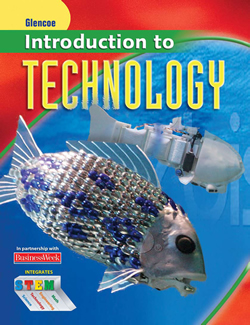Introduction to TechnologyChapter 3:
Processes, Tools, and Materials of TechnologyChapter SummariesSection 3.1
Separating is removing pieces of a material. Forming changes the shape of materials. In bending, material is formed by moving a part into a different position. In casting, a liquid material is poured into a mold. In compression, a flat material is pressed into a mold. Forging is shaping metal by heating and hammering. In extruding, softened material is squeezed through a small opening. Combining is joining several parts. Mechanical fasteners hold parts together. Conditioning changes the inner structure of a material to improve it. Finishing is the last step. Section 3.2
Measuring tools are used to identify size, shape, weight, distance, density, and volume. Muscle power operates a hand tool. Electricity supplies the power to operate a portable electric tool. Before you begin a “hands-on” activity, stop and think seriously about safety. Section 3.3
Mechanical properties of materials relate to how a material reacts to forces. Sensory properties are those we perceive with our senses. Lumber comes from trees. Plastics are synthetic. Metals that are mixed with other metals or other materials create alloys. Ceramics are made from minerals. Composites are two or more materials combined to form a new material.  | 




